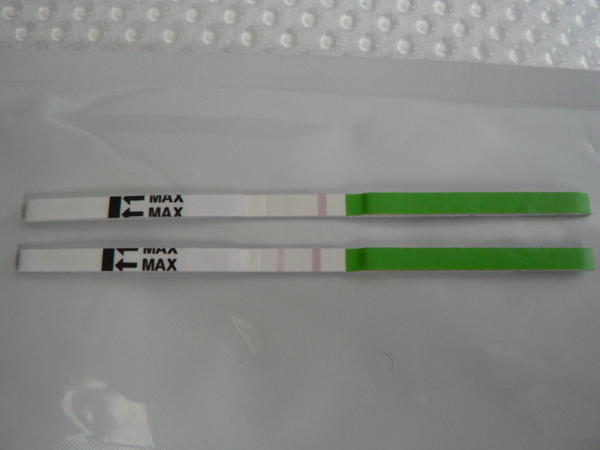Bacterial vaginosis or commonly called vaginitis is caused by bacteria. Detecting bacterial vaginosis in women is a must when planning to conceive. If not detected early, then it can cause complications during pregnancy and may also result in miscarriage. It is very easy to detect bacterial vaginosis with the help of tests. Read on to know more about the importance of bacterial vaginosis screening and the tests for screening.It is important to detect bacterial vaginosis in women before they plan to get pregnant. First it is necessary to understand what the disease is all about. When the normal flora is overgrown, a vaginal discharge takes place. Although this condition is common in women who are pregnant or otherwise, the condition can get complex during pregnancy. This discharge can result in amniotic fluid infection along with a host of other undesired conditions. The mother can suffer from pelvic inflammatory disease due to this and the membranes of her ovary might get ruptured. The baby can be born with a lower than average weight and the delivery can also be premature. In this articleWhat is Bacterial Vaginosis?Why is the Bacterial Vaginosis Screening Test Important?How Does the Bacterial Vaginosis Screening Take Place?Wet MountWhiff TestVaginal pH TestGram StainOligonucleotide ProbeWhat is Bacterial Vaginosis? Bacterial vaginosis is alternatively known as haemophilus vaginitis, gardnerella vaginitis or simply non-specific vaginitis. Even in a healthy vagina, a lot of microorganisms are found. But bacterial vaginosis occurs when the balance of these microorganisms get disturbed. The type of microorganisms those are particularly responsible for bacterial vaginosis are: BacteroidesGardnerellaMobiluncusMycoplasma Why is the Bacterial Vaginosis Screening Test Important? It is a cause of concern as when bacterial vaginosis occurs, these variants of microcosms increase manifold and the worst part is that the healthy microorganisms decrease. This change of balance causes the disturbance. The other cause of concern is that in most cases, a lot of women do not even show symptoms. It has been observed that the moment when you are noticing a grayish white vaginal discharge which is very different from the usual vaginal discharge, you must immediately consult your physician. This discharge also has a sort of fishy smell. The bacterial vaginosis screening therefore becomes extremely important as you can safely avert the chances of miscarriage which is so very possible under such circumstances. Besides, a preterm delivery or the occurrence of infection in the baby and mother post delivery is also averted. How Does the Bacterial Vaginosis Screening Take Place? First samples of the vaginal fluid are collected by the clinic. Cells from this fluid are then tested or screened to check whether the vaginal infection due to the presence of the microorganisms is indeed present. Accordingly the medication is decided and it is advisable to postpone the conception period and proceed only on medical advice for the safety of the mother and the child. Types Tests Bacterial Vaginosis Screening Given below are the different tests that are done for the Bacterial Vaginosis Screening.Wet Mount – A small amount of the vaginal discharge sample is placed on a microscopic slide. This is then mixed with a salt solution. The screening is then done to check the presence of the white blood cells, bacteria and the unusual cells which are termed as clue cells. The presence of clue cells indicates bacterial vaginosis.Whiff Test – Some drops of potassium hydroxide solution is added to the vaginal discharge sample and it is then tested whether the mix emits a fishy odour. If the whiff test records a fishy odour, it again indicates bacterial vaginosis.Vaginal pH Test – In a normal vagina, the pH balance is around 3.8 to 4.5. If the sample test shows a pH value above 4.5, it indicates bacterial vaginosis. Gram Stain – Here, a sample of the vaginal sample is taken on a microscopic slide and a few drops of a special dye are added to it. There are certain varieties of bacteria known as Gram positive bacteria which will turn the mix into purple and if the Gram negative bacteria, the mix will turn into pink. If the test results show the presence of Gram negative bacteria, most often it is the Gardnerella, it indicates bacterial vaginosis. Oligonucleotide Probe – Through this test the DNA of the bacteria is tested. Accordingly the occurrence of bacterial vaginosis is determined. But this test facility is not commonly available and most of the doctors make do with the results of the other set of tests.
Bacterial vaginosis or commonly called vaginitis is caused by bacteria. Detecting bacterial vaginosis in women is a must when planning to conceive. If not detected early, then it can cause complications during pregnancy and may also result in miscarriage. It is very easy to detect bacterial vaginosis with the help of tests. Read on to know more about the importance of bacterial vaginosis screening and the tests for screening.It is important to detect bacterial vaginosis in women before they plan to
get pregnant. First it is necessary to understand what the disease is all about. When the normal flora is overgrown, a vaginal discharge takes place. Although this condition is common in women who are pregnant or otherwise, the condition can get complex during
pregnancy. This discharge can result in amniotic fluid infection along with a host of other undesired conditions. The mother can suffer from pelvic inflammatory disease due to this and the membranes of her ovary might get ruptured. The baby can be born with a lower than average weight and the delivery can also be
premature.
What is Bacterial Vaginosis?
Bacterial vaginosis is alternatively known as haemophilus vaginitis, gardnerella vaginitis or simply non-specific vaginitis. Even in a healthy vagina, a lot of microorganisms are found. But bacterial vaginosis occurs when the balance of these microorganisms get disturbed. The type of microorganisms those are particularly responsible for bacterial vaginosis are:
- Bacteroides
- Gardnerella
- Mobiluncus
- Mycoplasma
Why is the Bacterial Vaginosis Screening Test Important?
It is a cause of concern as when bacterial vaginosis occurs, these variants of microcosms increase manifold and the worst part is that the healthy microorganisms decrease. This change of balance causes the disturbance.
The other cause of concern is that in most cases, a lot of women do not even show symptoms. It has been observed that the moment when you are noticing a grayish white vaginal discharge which is very different from the usual vaginal discharge, you must immediately consult your physician. This discharge also has a sort of fishy smell.
The bacterial vaginosis screening therefore becomes extremely important as you can safely avert the chances of miscarriage which is so very possible under such circumstances. Besides, a preterm delivery or the occurrence of infection in the baby and mother post delivery is also averted.
How Does the Bacterial Vaginosis Screening Take Place?
First samples of the vaginal fluid are collected by the clinic. Cells from this fluid are then tested or screened to check whether the vaginal infection due to the presence of the microorganisms is indeed present. Accordingly the medication is decided and it is advisable to postpone the conception period and proceed only on medical advice for the safety of the mother and the child.
Types Tests Bacterial Vaginosis Screening
Given below are the different tests that are done for the Bacterial Vaginosis Screening.
Wet Mount –
A small amount of the vaginal discharge sample is placed on a microscopic slide. This is then mixed with a salt solution. The screening is then done to check the presence of the white blood cells, bacteria and the unusual cells which are termed as clue cells. The presence of clue cells indicates bacterial vaginosis.
Whiff Test –
Some drops of potassium hydroxide solution is added to the vaginal discharge sample and it is then tested whether the mix emits a fishy odour. If the whiff test records a fishy odour, it again indicates bacterial vaginosis.
Vaginal pH Test –
In a normal vagina, the pH balance is around 3.8 to 4.5. If the sample test shows a pH value above 4.5, it indicates bacterial vaginosis.
Gram Stain –
Here, a sample of the vaginal sample is taken on a microscopic slide and a few drops of a special dye are added to it. There are certain varieties of bacteria known as Gram positive bacteria which will turn the mix into purple and if the Gram negative bacteria, the mix will turn into pink. If the test results show the presence of Gram negative bacteria, most often it is the Gardnerella, it indicates bacterial vaginosis.
Oligonucleotide Probe –
Through this test the DNA of the bacteria is tested. Accordingly the occurrence of bacterial vaginosis is determined. But this test facility is not commonly available and most of the doctors make do with the results of the other set of tests.






























